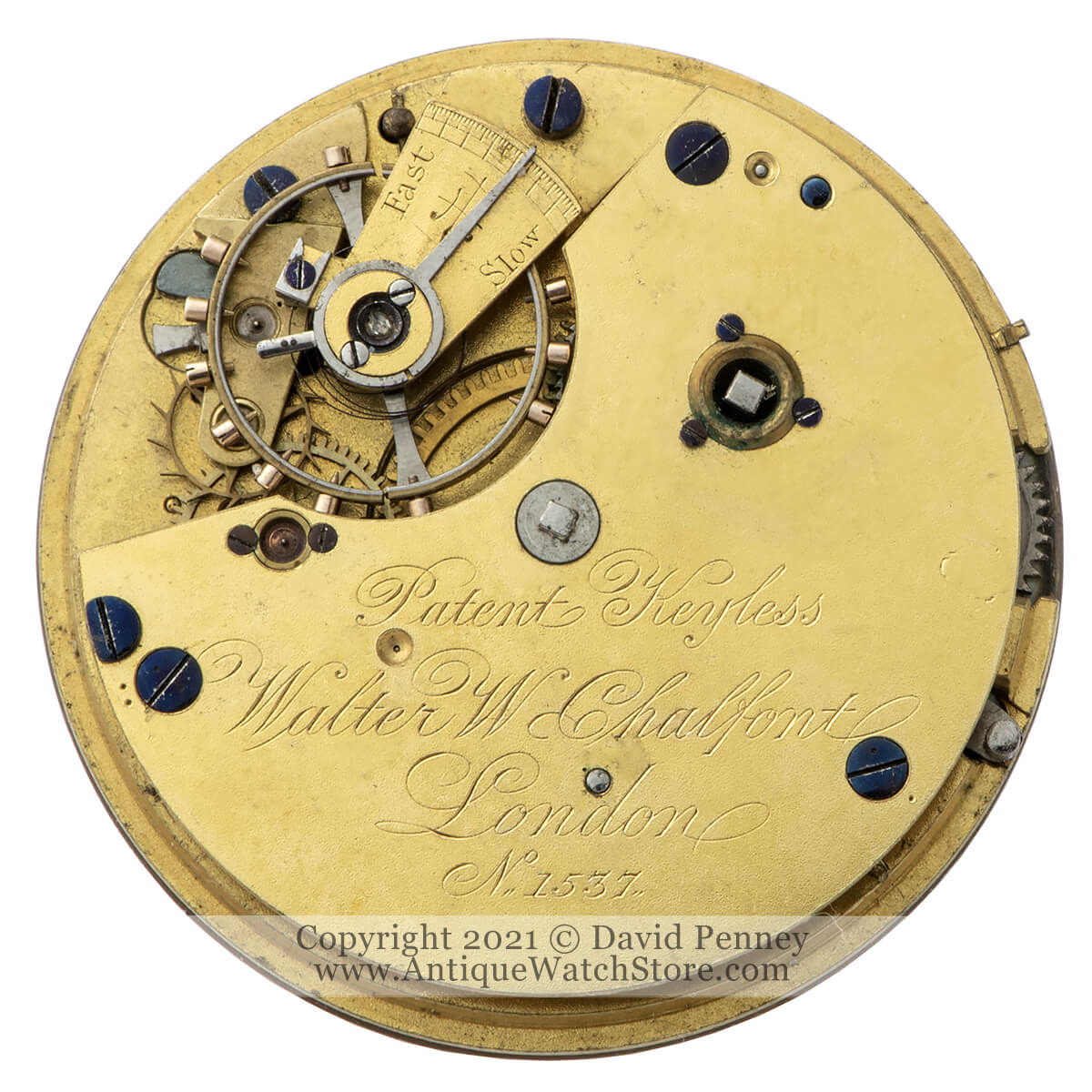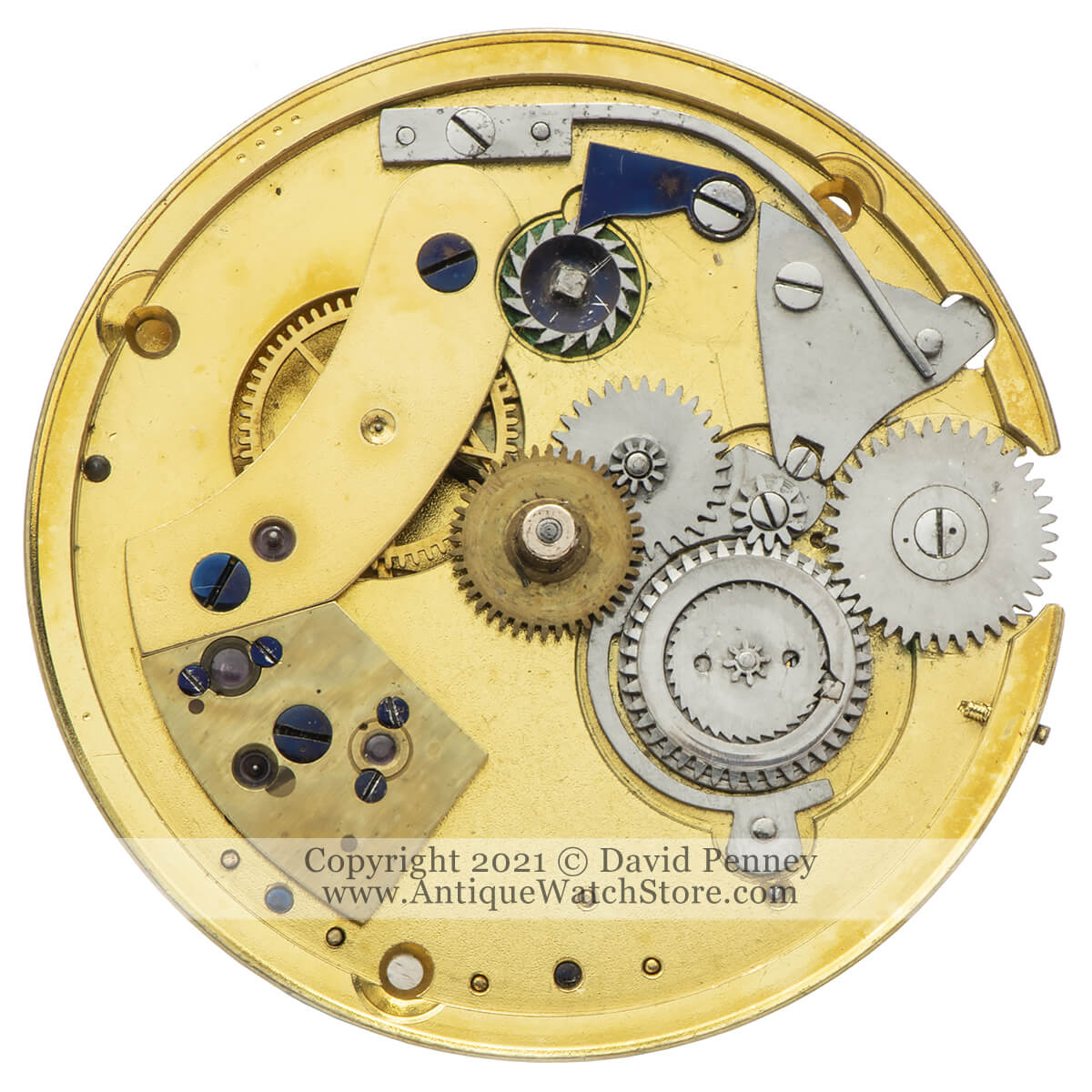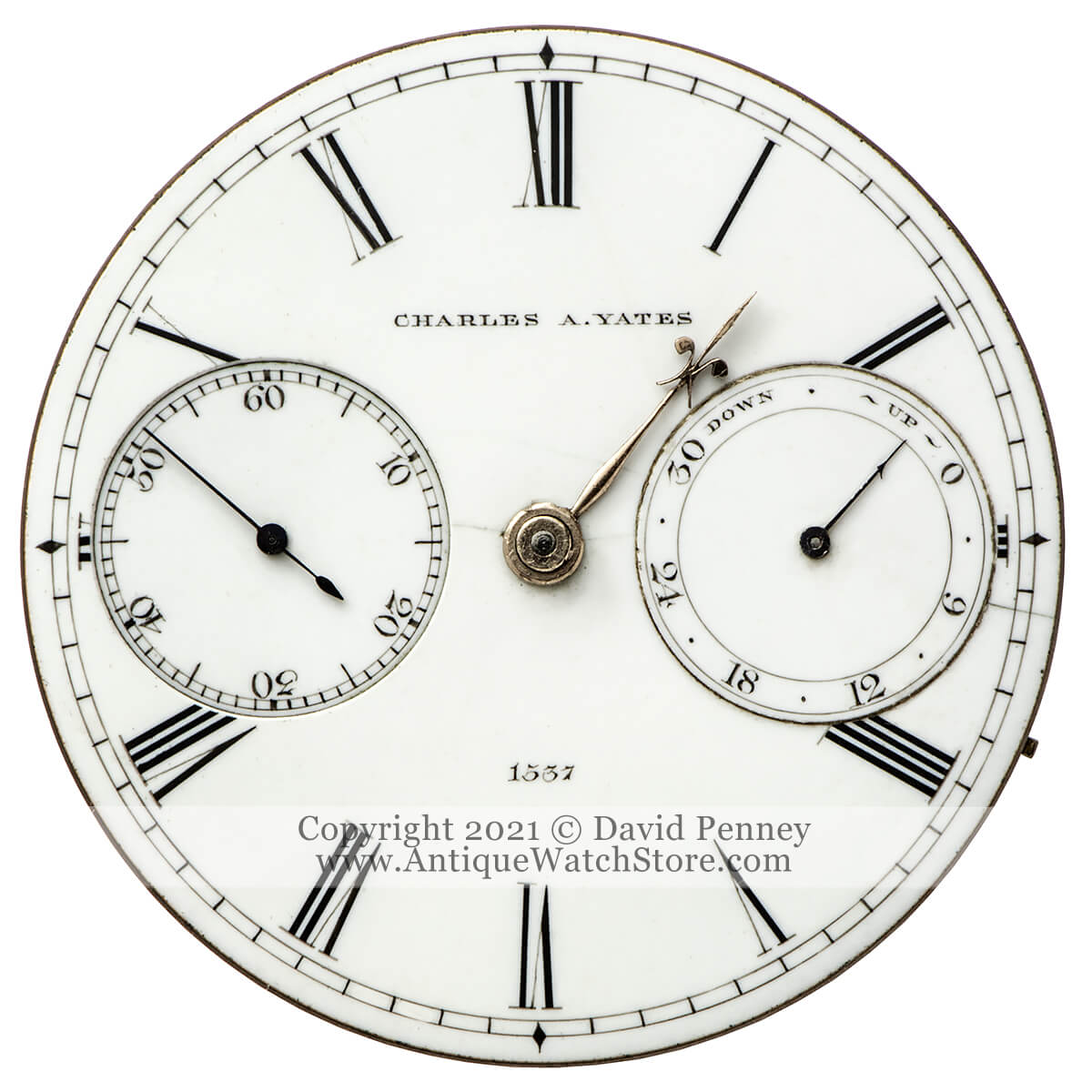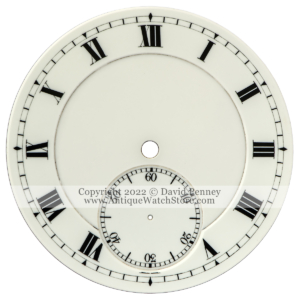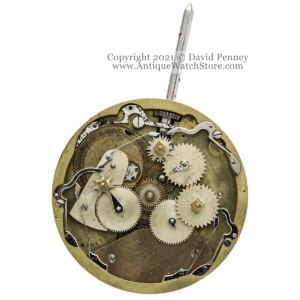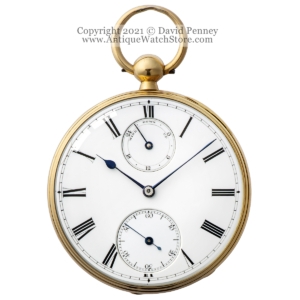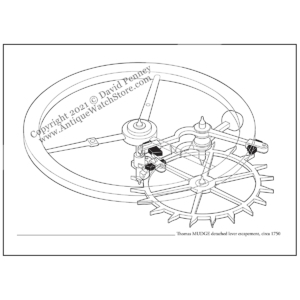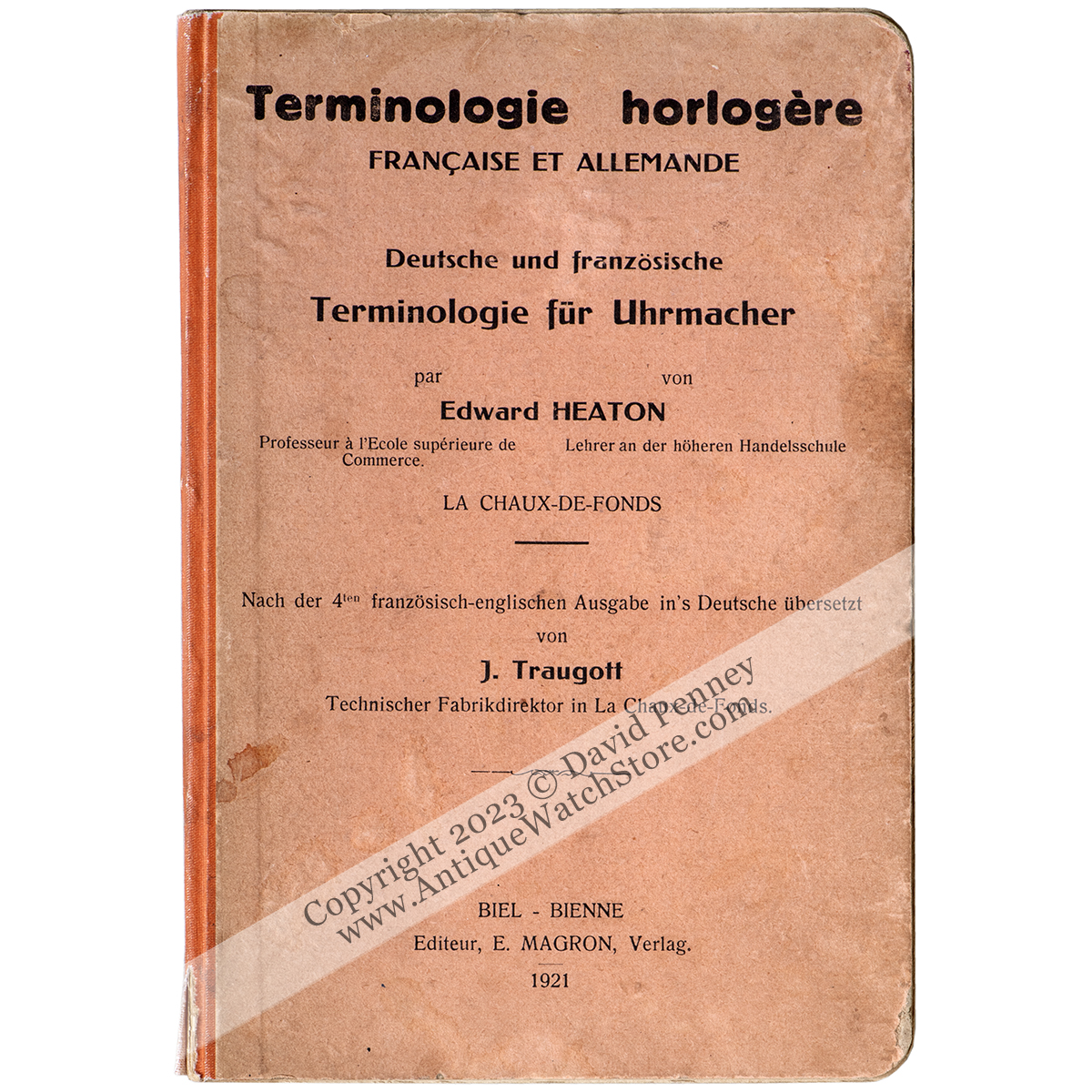Walter W Chalfont ‘Patent Keyless’ London. No 1537
Very rare (unique?) signed example of this important makers work, circa 1880.
£395.00
Slim three-quarter plate hollow-back keyless fusee movement. Single-roller detached lever escapement with what I believe is unique adjustable banking, almost certainly by Chalfont but possibly by the escapement maker he used. Compensation balance, spiral balance-spring. Enamel dial presumably signed for its first owner CHARLES A YATES, with up/down indication at 3 and seconds at 9. Gold fleur-de-lis hand. 41 mm diameter.
Walter W Chalfont, working from 7 Denmark Grove, Barnsbury and later from 6 Great Percy St, was a highly skilled inventor of different forms of keyless work who died at the tragically early age of 36 in 1886. Chalfont first became known to to a wider horological audience when he was awarded First Prize at the Workmen’s International Exhibition held in Islington, North London, in 1872. The prize was awarded for “keyless motion work for watches, shewing soundness and simplicity in construction and excellent workmanship.”
The Horological Journal published details of both going-barrel and fusee keyless work by him in 1879 as well as up/down work for going barrel watches in 1880. The latter is not an easy mechanism to accomplish, especially in regard to constraints of size, of which Chalfont was always cognisant.
There is no obituary of Chalfont that I have found but the chronometer maker Robert Gardner praises his work, as well as illustrating an improved system for going barrel watches with up/down, in the June 1881 issue of the Horological Journal.
NB: This movement clearly shows Chalfont using a ‘sliding-spring’ ratchet and click mechanism and he may well be the originator of the mechanism which is usually associated with Sutton, and please note that the steel up/down wheel is not supported on the movement and is instead held in place by its short pivot within the hole in the dial. Despite the engraving on the top plate, Chalfont is not known to have taken out any patent.
Hair cracks to dial, hand lacking, broken staff pivot, rather dirty and not of course working. Otherwise complete and the only movement known by me to bear Chalfont’s name, plus a lever banking system that I have not encountered before. Altogether an item truly worthy of a place within any UK specialist horological museum or private collection.
Item available
Description
Slim three-quarter plate hollow-back keyless fusee movement. Single-roller detached lever escapement with what I believe is unique adjustable banking, almost certainly by Chalfont but possibly by the escapement maker he used. Compensation balance, spiral balance-spring. Enamel dial presumably signed for its first owner CHARLES A YATES, with up/down indication at 3 and seconds at 9. Gold fleur-de-lis hand. 41 mm diameter.
Walter W Chalfont, working from 7 Denmark Grove, Barnsbury and later from 6 Great Percy St, was a highly skilled inventor of different forms of keyless work who died at the tragically early age of 36 in 1886. Chalfont first became known to to a wider horological audience when he was awarded First Prize at the Workmen’s International Exhibition held in Islington, North London, in 1872. The prize was awarded for “keyless motion work for watches, shewing soundness and simplicity in construction and excellent workmanship.”
The Horological Journal published details of both going-barrel and fusee keyless work by him in 1879 as well as up/down work for going barrel watches in 1880. The latter is not an easy mechanism to accomplish, especially in regard to constraints of size, of which Chalfont was always cognisant.
There is no obituary of Chalfont that I have found but the chronometer maker Robert Gardner praises his work, as well as illustrating an improved system for going barrel watches with up/down, in the June 1881 issue of the Horological Journal.
NB: This movement clearly shows Chalfont using a ‘sliding-spring’ ratchet and click mechanism and he may well be the originator of the mechanism which is usually associated with Sutton, and please note that the steel up/down wheel is not supported on the movement and is instead held in place by its short pivot within the hole in the dial. Despite the engraving on the top plate, Chalfont is not known to have taken out any patent.
Hair cracks to dial, hand lacking, broken staff pivot, rather dirty and not of course working. Otherwise complete and the only movement known by me to bear Chalfont’s name, plus a lever banking system that I have not encountered before. Altogether an item truly worthy of a place within any UK specialist horological museum or private collection.
